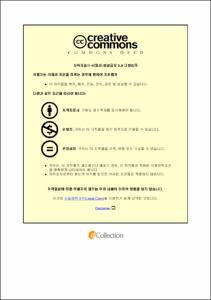해수담수화를 위한 역삼투-압력지연삼투 융합 공정의 최적화
- Abstract
- Recently, reverse osmosis (RO) is the most common process for seawater desalination. A common problem in the RO and thermal processes is the high energy requirements for seawater desalination. Many researches have been conducted to use renewable energy sources for power supply to the RO plant in order to reduce the cost of desalination process. One method to generate osmotic power is through pressure retarded osmosis (PRO) process. Experimental studies have demonstrated the technique potential for power generation using reverse osmosis (RO) membranes of high water permeability and salt rejection rates. In the PRO process, water permeates through a semipermeable membrane from a low concentration feed solution to a high concentration draw solution due to osmotic pressure.
Recently, flat-sheet and hollow fiber PRO membranes have been used for the PRO process, but most of those have limitations of the membranes, such as a limited hydraulic pressure applied and membrane deformation during operation. Also, despite many studies were carried out to investigate the PRO system, there have been only few studies which have evaluate the performance of the spiral wound membrane module using RO concentrate for a draw solution and RO permeate for a feed solution. The main objectives of this study is to assess the power production from a PRO pilot-plant using 8 in spiral wound membrane modules.
The effects of feed and draw solution concentration, flowrate, mixing ratio, and module configuration on spiral wound PRO module performance were investigated in this study. As major results, Experimental result of power density of around 1.24 W/m2 and 1.83 W/m2 were obtained 50,000 mg/L. Experimental result of power density of around 2.71 W/m2 and 3.68 W/m2 were obtained 70,000 mg/L. Increases of the draw solution concentration and flowrate lead to the improvement of PRO performance. When the flowrates of 2.4 L/min, 5.0 L/min, 10.0 L/min with 1:1 mixing ratio were applied, the power density were 1.01 W/m2, 2.71 W/m2, 3.68 W/m2 at △P of 13.6 bar, 17.7 bar, 19.2 bar, respectively. Optimal mixing ratio of draw solution and feed solution inlet flowrate was found to be 1:1 to attain a maximum power density. Configuration of two-stage PRO was better than the single-stage PRO for recovery of energy. In addition, the energy recovery rate of two-stage PRO system was higher than the single-stage PRO.
- Issued Date
- 2016
- Awarded Date
- 2016. 2
- Type
- Dissertation
- Publisher
- 부경대학교 대학원
- Affiliation
- 부경대학교 대학원
- Department
- 대학원 지구환경시스템과학부환경공학전공
- Advisor
- 강임석
- Table Of Contents
- Ⅰ. 서론 1
Ⅱ. 문헌연구 3
2.1 삼투압(osmotic pressure) 이론 3
2.2 삼투압 응용 공정 5
2.3 해수담수화 6
2.3.1 해수의 특성 6
2.3.2 해수담수화 공정 8
2.3.3 해수담수화 현황 10
2.4 역삼투(Revers Osmosis; RO) 11
2.4.1 RO mechanism 11
2.4.2 RO 전처리 공정 12
2.5 압력지연삼투(pressure retarded osmosis; PRO) 13
2.5.1 이론적 배경 14
2.5.2 수투과량과 전력밀도 17
2.5.3 농도분극(concentration polarization) 현상 18
2.5.4 역염투과(reverse salt flux) 현상 20
2.5.5 압력지연삼투(pressure retarded osmosis) 현황 20
Ⅲ. 재료 및 방법 23
3.1 원수의 특성 23
3.2 압력지연삼투 막 모듈 24
3.3 역삼투-압력지연삼투 융합 pilot plant 25
3.4 압력지연삼투 공정 29
3.4.1 단일모듈(single-stage PRO) 29
3.4.2 모듈 배치 및 유입원수 흐름에 따른 성능 분석 30
Ⅳ 결과 및 고찰 31
4.1 Single-stage PRO process의 투과수량 및 전력밀도 특성 31
4.1.1 유도용액의 염분농도에 따른 성능 비교 31
4.1.2 유도용액과 유입원수의 유입유량에 따른 성능 비교 36
4.1.3 유도용액과 유입원수의 유입비에 따른 성능 비교 39
4.2 Single-stage vs. Two stage PRO process 성능 비교 45
4.3 Two stage PRO precess 유입원수 흐름에 따른 성능 비교 49
Ⅴ. 결 론 54
참 고 문 헌 55
- Degree
- Master
- Files in This Item:
-
-
Download
 해수담수화를 위한 역삼투-압력지연삼투 융합 공정의 최적화.pdf
기타 데이터 / 13.55 MB / Adobe PDF
해수담수화를 위한 역삼투-압력지연삼투 융합 공정의 최적화.pdf
기타 데이터 / 13.55 MB / Adobe PDF
-
Items in Repository are protected by copyright, with all rights reserved, unless otherwise indicated.